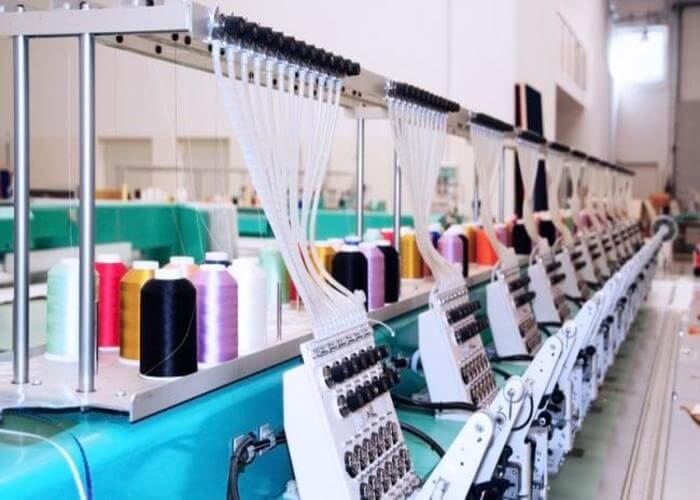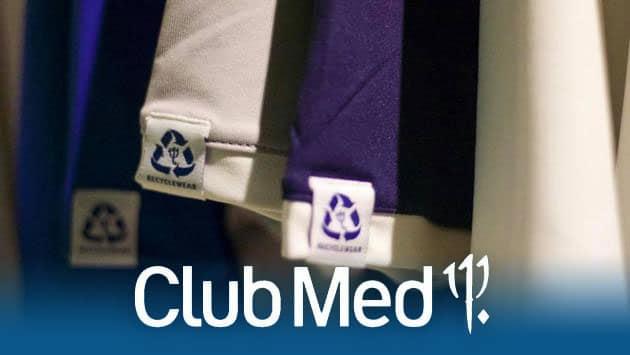The process is more costly, but it provides the color continuity that customers are looking for and is vital to the uniform industry. According to Alpert, the color match for piece dye products are only as good as the amount of pieces put in the dye vat. This yardage is usually around 800 yards, limiting color continuity and causing vast color variations lot to lot.
With a stock dye/fiber dye process, the fiber is dyed at the outset, providing exceptional color consistency. Yardage can be matched piece to piece upwards of 10,000 yards or more.
“The market needs better, different and interesting, and that is what we provide with our stock dye/fiber dye fabrics,” says Alpert. He also states that Metcalf is the only company within the industry to manufacture such a product. “I don’t know of anyone else doing stock dye,” he adds.
Originally known as a supplier of 100 percent worsted wools, Metcalf changed direction in 2003, balancing its product line to accommodate a changing customer base. Today, the company offers a full array of fabrics, including 55%/45% poly/wools, 100% polyester and 65%/35% poly/rayon. Wicking, soil repellency and other popular performance features are also part of the Metcalf catalog.
About 90 percent of its sales are to manufacturers in the United States, with the remaining coming directly from business with corrections agencies and state and city municipalities in this country and Canada. “The Canadian market has been particularly strong for us ever since the demise of Cleyn & Tinker,” comments Alpert. The defunct mill was a leading player in Canada’s worsted wool market.
In the United States, Metcalf was able to win the highly desired New York State Police contract because of its stock dye product line. “They were unhappy with their current uniforms for two reasons,” recalls Alpert. “First, color inconsistencies between the trousers and shirts resulted in a look that was less than professional, and their garments also didn’t have flexibility and ease of movement the troopers were after.” Metcalf responded with a stock/dye, poly/wool fabric and added Lycra, which bolstered both the look and comfort of the uniforms. “You have to be quick to react, able to make the changes customers are looking for,” notes Alpert. “We gave them a better product, and we’re more than competitive.”
Metcalf has achieved its competitive edge, in part, through joint ventures with plants overseas and in Mexico. “My mills understand that people are not going to pay more in this environment,” says Alpert. The company has an exclusive relationship with its fabric producers, meaning that they work with only one uniform client – Metcalf. Quality control inspections are performed overseas, and again at the company’s 180,000 square foot facility in Rhode Island.
And while it has grown exponentially over the past year, it has not lost sight of the main ingredient behind a successful uniform business – customer service. Sales reps visit accounts frequently, and communication between customers and management is strongly encouraged. “When you call us, someone is going to pick up the phone and respond,” adds Alpert.
This old-school approach has served it well, as has its acceptance of today’s economic realities. “Every customer I have is worried about his next buy,” says Alpert.
To illustrate this point, Alpert recalls a recent conversation with one of his accounts, a manufacturer, who was concerned that a customer’s budget constraints may affect the contract already in place. “Yes, they want to buy, but they also want to know that I’ll support them on the back end if anything falls through” he notes.
To that end, Metcalf works as a team with its manufacturers, helping them plan better and buy smarter. For its middle market customers, Metcalf even provides a needs assessment each quarter, helping them streamline expenses and minimize overhead. “It’s a cost to us, of course, but it helps build relationships,” notes Alpert.
If being overly receptive to cost and service concerns is the price of doing business in a down economy, then how is forward movement sustained in such a climate? Do you work harder to keep your base, or do you try to attract new customers?
In the uniform industry, of course, the answer is both. But this being a niche business, there are a finite number of customers. “We try to get our established customers to add more Metcalf products to their existing lines,” says Alpert.
You also work hard to plan ahead, keeping inventories tight and communication with customers tighter.
“If you approach this year as if it were ’08, you’re in trouble,” says Alpert.
Metcalf is a division of the Brickle Group, a third generation entity that currently does business in 27 countries. Visit Metcalf on the web: http://www.metcalfbrothers.com/












